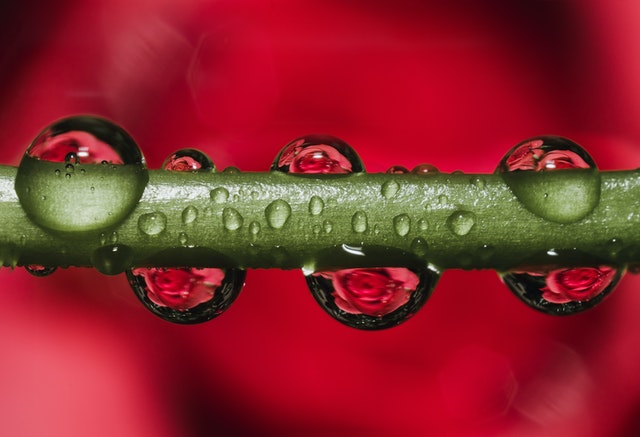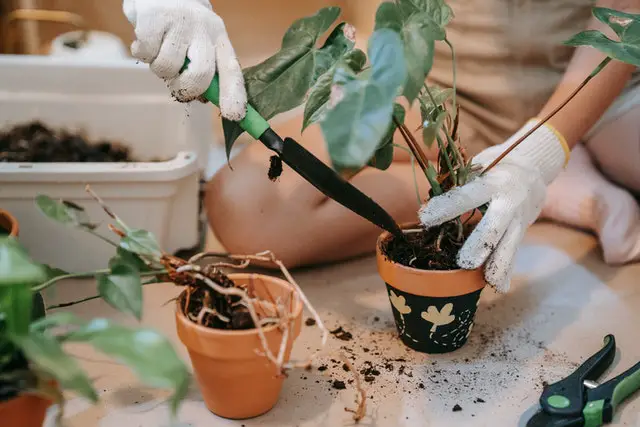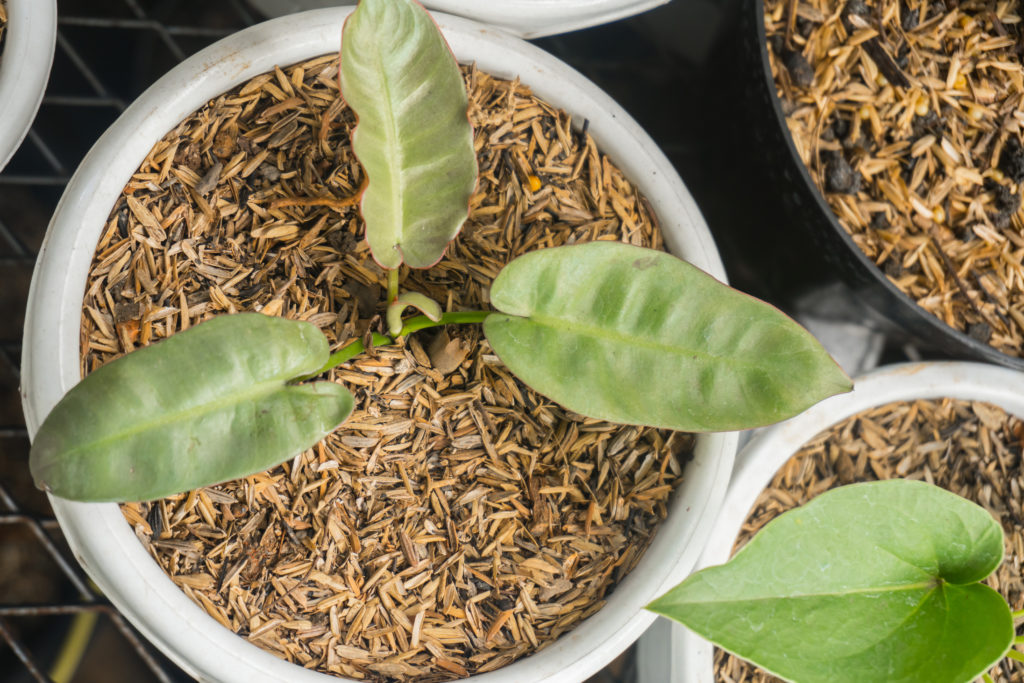One of the reasons plants have become so important is because of their ability to refresh the air that we live in and connect with us.
And the Philodendron Atabapoense plant checks this box and steps up the game with its beautiful ever-green dual-foliage and other stunning features.
Whether you’re an experienced plant parent or just starting out, with its low-maintenance requirements and striking appearance, the Philodendron Atabapoense is a great choice for anyone looking to add some greenery to their home.
In this article, I’ll share the various exciting things about Philodendron Atabapoense and how to maintain them in your home.
What is Philodendron Atabapoense?
Philodendron Atabapoense is a tropical climbing plant best known for its green elongated beautiful foliage. It has large arrow-shaped leaves and long petioles that give each leaf enough space to breathe and grow.
The plant is an attractive semi-epiphytic plant with a green leaf surface and maroon underside. It is perfect for improving a room’s ambiance, as well as performing its decorative function. Its colors get well accentuated when its leaves are supplied with great sunlight and the leaves become showy when the sun’s rays fall on them.
It is an exquisite indoor plant and can thrive with low-maintenance and easy care routines. Philodendron Atabapoense only needs certain growth conditions for its healthy living and beautiful leaves, and it’ll reward you with an appealing home view and purified air. Certain plants like this are invaluable for refreshing your mood and reducing stress.
This plant closely resembles Philodendron Billietiae, and may sometimes be mixed up with it because of their closely related features. However, they are quite different and exhibit different characteristics, including their foliage, tolerance, and growth pattern.
As we move on, you’ll get to know the disparities between the two plants and how to better identify them.
Origin and Classification
Philodendron Atabapoense is a tropical plant that was first discovered by one G.S Bunting in 1975. And ever since, it has lived as a fresh green plant, suitable for indoor aesthetics. It is native to the rainforest of Venezuela, South America, and Brasil.
It is of the Araceae family and genus philodendron. This plant has earned its popularity among so many, and is thus, quite sought after.
Features
It is vital to know the features of this plant to ensure proper maintenance. Also, since there are other possible look-alikes of this plant, then it would be important to be able to distinguish it from others.
1. Foliage
The Philodendron Atabapoense has large arrow-headed leaves that change colors in their different growth stages. It has deep green leaves, and its underside varies from its juvenile stage to its mature stage. The underside of these leaves may develop maroon, or burgundy colors.
Its leaves have a fresh, plain, and sleek texture, with its top an exquisite green. This plant has a reputation for being evergreen and long-lasting provided it’s given the right living conditions.
Philodendron Billitiae, however, solely has green undersides and the tip of its leaves face downwards.
2. Stem

This plant has a glossy and slim elongated stem that extends on different sides, allowing each part of the plant to have its own space. Each leaf has a separate stem, it’s as though the plant allows each leaf to live individually, which makes the plant more unique.
3. Size
The growth of this plant is impressive. It can grow to an average height of 30 inches long and 3 inches wide. It reaches its adult height at 4ft, its maximum height being 8ft. Note that this plant will grow to its full size only when it’s given an ideal growing condition and support for its growth.
4. Growth pattern
Philodendron Atabapoense is known to be a fast grower and will reach its full adult stage in 2 to 3 years of growth. It is best grown indoors or on a patio where it receives considerable implementation of its growing practice.
On the other hand, you can grow it outside if you live in a USDA plant hardiness zone of 9b to 11. The plant grows fast during its growing seasons, (spring and summer), so endeavor to treat it well during these times. In winter, it is considered dormant, as its growth rate reduces to a minimum or nil level. The best thing to do at this time of the year is to not feed the plant at all.
5. Life span
It is a long-lasting plant and can survive for several years. Its leaves can remain green and fresh for more than 5 years should they be given the required care. However, it starts to shed its leaves one by one as it gets old.
6. Air purifier
The fact that this plant freshens the air, and adds a touch of nature to the house is one, but not the least, of the many factors that make growers and plant collectors appreciate the significance of the plant. It is a natural air purifier and purges the air of toxins.
7. Toxicity
This may be quite ironic, but, as much as this plant gets rid of toxins, it can be toxic when consumed. Weird? Not at all. It is almost natural to all philodendrons; the plant has an element of calcium oxalate in its leaves that makes it poisonous if eaten. The ingestion of this plant may result in conditions like mouth swelling and GIT.
Basic Care of Philodendron Atabapoense
Philodendron Atabapoense is an easy-to-maintain plant and will tolerate not being put in the spotlight for caring. Most collectors have taken a liking to this plant because of this. It makes it an interesting and a less-demanding plant to keep in your home, which is also very beneficial to you.
But, if you ever thought this plant didn’t require its ideal living conditions fulfilled and is completely neglect-tolerant, then you’re vying for the untimely death of your plant.
Although it truly is low-maintenance, the Philodendron Atabapoense plant needs to be certain of proper nurturing to respond to growth well. You should know that as much as the plant can survive in the wild alone, you will need to replicate some of its natural living conditions to make it thrive in your room.
Hence, the Philodendron Atabapoense needs to be given an ideal environment to live in to grow and thrive well. Let’s examine in detail the care routine you should practice to make your plant healthy and happy.
1. Soil

The plant loves a slightly dry soil, but do not mistake this for making the soil completely stripped of moisture. It loves a moist, airy well-drained potting mix with nutrients and organic materials. The perfect potting mix for your plant should have perlite, vermiculite, peat moss, and orchid bark as components.
These soil components will allow the plant to drain water and also provide nutrients for the plant’s growth. It can also grow in 100% sphagnum moss with adequate fertilization. Another important element is the level of pH present in the soil which should be 6.0-7.3.
2. Sunlight
Because of the vibrant green color of the leaves of this plant, it will need to be exposed to necessary lighting to provide its leaves with chlorophyll. Thus, it needs an indirect bright light exposure. To achieve this, you may place the plant in a dappled shaded area, a few meters away from a west or east-facing window, or cloaked with shade cloth in a garden or other outdoor area.
Whatever position you choose for your plant, it should have 70-85% light exposure indoors and 40-7-% light exposure outdoors. You may also use artificial growlight to grow the plant. Lighting is important for this species; low light may lead to a leggy stem and other relative conditions.
3. Watering
In the periods where the Philodendron Atabapoense plant’s growth rate is at its highest (spring and summer), it needs to be frequently watered. Water it thoroughly once or twice a week. But before you water the plant, make sure the top inch of the soil is dry; you can check this by dipping a finger in the soil.
If it is, water the plant deeply until water starts to escape the drainage hole. Then, wait for the soil to dry before watering again. Nevertheless, always make sure you empty the plant’s tray and don’t water more than required. This plant is not very tolerant of overwatering. Water less in the winter.
4. Humidity
This plant enjoys a well-humidified surrounding. A sufficient level of humidity of 60-75% is its ideal humidity. To create this environment, put the Philodendron Atabapoense plant with other plants to increase the moisture provided in the environment. You can also mist these plants by putting them in a tray of water and pebbles; or simply invest in a humidifier.
5. Temperature
A warm temperature of 55-80 degrees Fahrenheit (12-26 degrees Celsius) is just the required temperature level for the beautiful Philodendron Atabapoense plant. If the plant is normally placed outdoors, then bring it in during winter so the plant doesn’t freeze.
6. Fertilizer
Feed the plant with fertilizers every 2-3 times a year, and only during summer and spring. It likes a limited slow-release feed, so do not fertilize too often. Use a good organic fertilizer diluted in water or natural fertilizers.
7. Pruning
Pruning this plant regularly will allow it to be less prone to diseases, and keep it compact and groomed. Use sterilized scissors and wear gloves while pruning. Make sure to get rid of dead and dry leaves from the plant.
How to Propagate Philodendron Atabapoense

The stem cutting in water technique is an effective technique for propagating Philodendron Atabapoense. Follow these easy steps to go through the propagation process
Step One
To make sure the plant is not infected while propagating, sterilize the scissors, knife and other tools to be used in the propagation process.
Step Two
Cut a rigid and healthy stem from the plant, with sterilized scissors or a knife. The stem should be about 3-6 inches, with not less than two nodes and leaves at the top.
Step Three
Dip the stem cutting in the rooting hormone to make it root faster. You can make the rooting hormone by adding one teaspoon of apple cider vinegar to 1.5 liters of water.
Step Four
Next, get a clean jar and fill it with warm water. Then leave the water to sit for a few hours to clear out impurities from the water.
Step Five
Then, bury the cut stem in the water, with the leaves sticking out. And place the jar near a windowsill, 2 feet away from direct sunlight. Change the water every 3 days.
Step Six
Ensure that the plant gets all its required conditions to help it root and grow faster. In 2-3 weeks, you will start to notice new root growth and more leaf shoots. Then, transfer the stem cutting to the soil to plant properly. Interestingly, you can permanently grow this plant in water.
Common Problems In Caring For Philodendron Atabapoense
The Philodendron Atabapoense plant is naturally disease- and pest-resistant. However, some problems may suffice while caring for it. We’ll discuss these problems and effective methods to solve them in this section.
1. Pest Infestation
The most common pests that infest this plant include fungus gnats, spider mites, mealy bugs, and white flies. Fungus gnats lay eggs in the soil and hatch into several larvae. An indication of their infestation is the appearance of grayish-black insects hovering around the plant and yellowing leaves. Mealybugs suck the nutrient out of the plant and stunt its growth.
To get rid of these pests, spray them with neem oil repeatedly or reduce watering schedules to dry out pests like fungus gnats. You can also manually clean the leaves out by dipping cotton wool in isopropyl or alcohol and rubbing it onto the affected leaves and stem of the plant.
2. Common Diseases
Root rot is a common enemy of the Philodendron Atabapoense plant. It is caused by stiff non-draining soil and overwatering. Root rot could easily kill the plant, so you must be careful and pay attention to your plant. Root rot will lead to yellowing and drooping leaves.
This disease is better prevented than cured because it is often a cause of the plant’s death. However, if you encounter this problem, first remove the affected leaves from the plant, and reduce watering practice for a few days for the plant to resuscitate.
3. Yellowing
Causes of this include overwatering, improper soil moisture, and low humidity. Inspect the plant to know the cause of yellowing and adjust your plant caring culture to solve the problem.
4. Brown and Drooping Leaves

Low humidity, low watering, and high sunlight exposure are the causes of this. Change the position of the plant to a more shaded area and make sure to increase humidity by either misting plants or using a humidifier.
5. Magnesium Deficiency
This is a rare condition in Philodendron Atabapoense; its symptom is an indication of v-shaped yellow spots on leaves. You can easily solve this by feeding the plant with magnesium sulfate; mix magnesium sulfate in a gallon of water and spray it onto the plant.
Also see: Amydrium Silver Plant, Grow & Care Guide 2022
Outro
The Philodendron Atabapoense can grow to be enormous and beautiful plants. It rewards you with its rich green and stunning foliage when allowed to grow comfortably and healthily. A common myth about low-maintenance plants is that they do not need to be cared for at all. If you want the best out of this plant, then you’ll need to debunk that notion and ascertain the proper grooming and care of your plant.
Buying Options
The Philodendron Atabapoense is up for sale on Etsy at different reasonable prices. Check it out in the link below to make your desired purchase.
Click here: https://www.etsy.com/market/philodendron_atabapoense
Frequently Asked Questions
What is the best support to provide for this climbing Philodendron?
Philodendron Atabapoense will grow beautifully if given vertical support to grow with, moss poles or trellises can be used as support.
What is the difference between Philodendron Atabapoense and Billietiae?
These two plants are very alike. However, a major difference is the underside of both leaves. While Philodendron Atabapoense has burgundy or maroon undersides, Philodendron Billietiae has a green or rose-colored underside.
Is the Philodendron Atabapoense a rare plant?
Yes, Philodendron Atabapoense can be a little hard to find, but it is not impossible to buy. You can purchase it on gardening websites or Etsy as recommended to avoid being deceived by fake groomers.

Hey, I’m Lisa and I’ve been an avid gardener for over 30 years. I love writing, talking and living in the garden! Feel free to connect with me on my socials below

